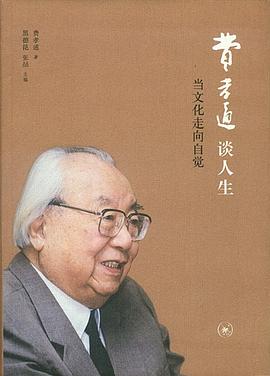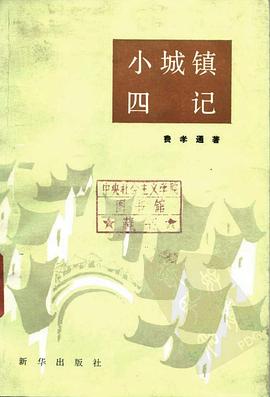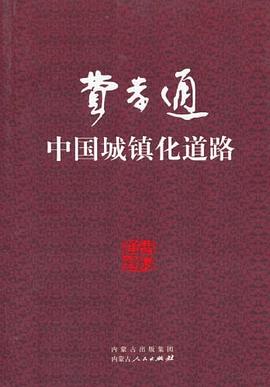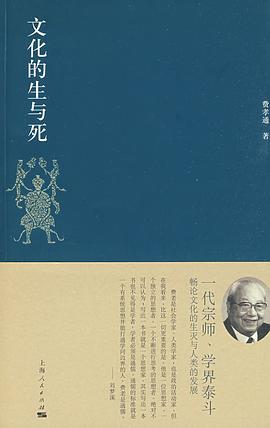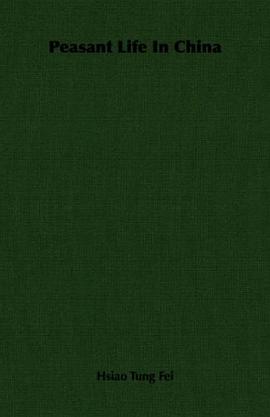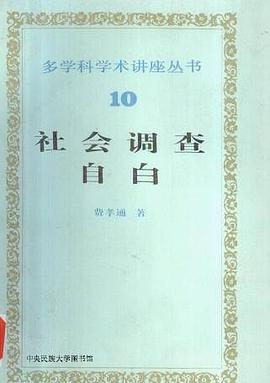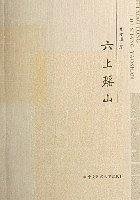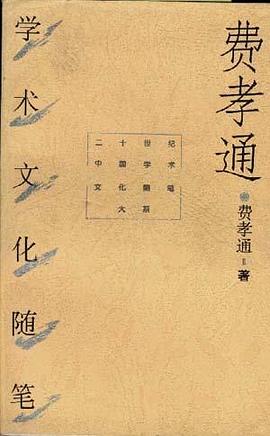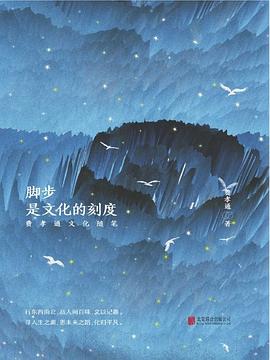目 錄
代序:民族研究――簡述我的民族研究經曆
與思考
第一章 導論
一、中華民族的多元一體格局
(一)中華民族的生存空間
(二)多元的起源
(三)新石器文化多元交融和匯集
(四)凝聚核心漢族的齣現
(五)地區性的多元統
(六)中原地區民族大混雜、大融閤
(七)北方民族不斷給漢族輸入新的血液
(八)漢族同樣充實瞭其他民族
(九)漢族的南嚮擴展
(十)中國西部的民族流動
(十一)中華民族格局形成的幾個特點
(十二)瞻望前途
二、中華民族研究的新探索
第二章 中華民族的起源與形成
一、中華新石器文化的多元區域性發展
(一)中華文化起源於中華大地
(二)黃河中下遊東西相對的兩個文化區
(三)長江中下遊東西相對的兩個文化區
(四)燕遼文化區及黃河上遊文化區
(五)以鄱陽湖――珠江三角洲為中心的
華南文化區
(六)北方遊牧與漁獵文化區
(七)南北農業及狩獵文化三帶的平行發展
二、中華遠古的各部落集團
(一)史料問題
(二)父權製以前的史影
(三)父權製時代各部落集團
三、中華民族形成史的分期
(一)中華民族的起源與孕育
(二)中華民族的自在發展
(三)中華民族從自發到自覺的聯閤
四、中華民族的結構
(一)中華大地的地理結構
(二)中華民族的民族結構
(三)中華民族的政治結構
五、中華民族的共同性(一)
(一)中華民族認同有長遠的曆史淵源
(二)各兄弟民族之間,你中有我,我中有你
(三)各具特點和特長而又互相學習和吸收
(四)中國民族關係的新紀元
六、中華民族的共同性(二)
(一)遠古神話所反映的共性與個性
(二)中國各民族遠古祖先的認同與各自的特點
(三)各民族的曆史自古認同為中國曆史的一部分
(四)在中華民族解放鬥爭中同呼吸共命運
第三章 民族稱謂含義的演變及其內在聯係
一、“漢人”考
(一)“漢人”稱謂的起源
(二)“漢人”族稱的形成
(三)“漢人”範圍的擴大與“漢族”稱謂的齣現
(四)對“漢人”稱謂的演繹
二、“契丹”――漢人之彆名
三、曆史上少數民族中的“漢人成分
(一)少數民族的崛興往往得助於漢人
(二)漢人之化入西北民族的成分
(三)漢人之化入西南、東南民族的成分
(四)漢人之化入中南民族的成分
(五)漢人間有遷於鄰國而被涵化的成分
(六)民族間相互涵化是促進發展的因素
四、中國・華夷・蕃漢・中華・中華民族
(一)中國名稱的起源
(二)春鞦戰國時期中國與華夷的含義
(三)秦以後中國含義的發展演變與確立
(四)漢人與蕃漢對舉的內涵及外延
(五)中華與中華民族含義的演變和發展
第四章 中國曆史上遊牧民族的地位
一、匈奴遊牧社會的曆史地位
(一)匈奴統一中國北方遊牧區的曆史意義
(二)長城內外廣大農業區與遊牧區的形成
(三)匈奴遊牧社會的曆史地位
(四)遊牧社會與農業社會曆史的整體聯係
二、西漢政府設置河西四郡的曆史意義
(一)設置河西四郡的曆史背景
(二)河西四郡促進瞭漢朝對西域的統一
(三)河西四郡促進瞭中西交通的發展
(四)河西四郡促進瞭西北經濟文化的發展
第五章 中華民族研究的理論與方法
一、民族研究新發展的良好開端
(一)對中華民族的研究是時代的需要
(二)對中華民族內涵與外延的探討
(三)對中華民族“多元”與“一體”的探討
二、中華民族起源學說的由來與發展
(一)從一元說到多元一體說
(二)多元一體說的考古學依據
(三)中華文明初曙發展的總趨勢
(四)需要對遠古神話係統整理
三、傳統民族觀與中華民族一體觀
(一)傳統的“華夷之辨”
(二)“大一統’格局中的“華夷之防’
(三)中華民族從自在發展到自覺的聯閤
四、中國民族研究的識異與求同
修訂本跋
CONTENTS
In Lieu of a Preface: An Brief Account of My Experience and
Reflection on Ethnic Studies � � ?Fei Xiaotong
Chapter One Introduction
1 The Pattern of Diversity in Unity of
the Chinese Nation
(1) Living Space of the Chinese Nation
(2) Origin of the Diversity
(3) Blending and Convergence of the Diversity of
Neolithic Culture
(4) Emergence of the Han People-a Cohesive
Core
(5) Diversity in Unity in Different Localities
(6) Great Minglement and Great Blending of
Ethnic Groups in the Central Plains
(7) Northern Ethnic Groups Continuously Infused
New Blood into the Han People
(8) The Han People Also Strengthened Other
Ethnic Groups
(9) Southward Expansion of the Han People
(10) Migration of Ethnic Groups in West China
(11) Some Characteristics in the Forming of the
Pattern of the Chinese Nation
(12) Looking into the Future
2. A New Exploration in the Research of
the Chinese Nation
Chapter Two Origin and Formation of the Chinese Nation
1. Chinese Neolithic Cultures Developed
in Different Regions
(1) Chinese Culture Originated on the Territory of
China
(2) Two Cultural Regions Opposite to Each Other
from East to West in the Middle and Lower Reaches
of the Yellow River
(3) Two Cultural Regions Opposite to Each Other
from East to West in the Middle and Lower
Reaches of the Yangtze River
(4) Yan-Liao Cultural Region and the
Cultural Region in the Upper
Reaches of the Yellow River
(5) South China Cultural Region with Boyang Lake
and Pearl River Delta as Its Center
(6) Nomadic and Hunting Cultural Region
in the North
(7) The Parallel Development of the Three Zones-
Agricultural Cultural Zones in the North and
South and the Hunting Cultural Zone
2. Tribal Groups in Ancient China
(1) Several Problems Related to Historical
Materials
(2) Historical Shadows Before Patriarchy
(3) Tribal Groups in the Times of Patriarchy
3. Time Division of the History of Formation of
the Chinese Nation
(1) The Rise and Growth of the Chinese
Nation
(2) The Chinese Nation Developed on Its Own
(3) The Chinese Nation Going from Spontaneous
to Conscientious Union
4. The Structure of the Chinese Nation
(1) Geographic Structure of the Chinese Land
(2) Ethnic Structure of the Chinese Nation
(3) Political Structure of the Chinese Nation
5. Common Characters of the Chinese Nation (1)
(1) The Identification of the Chinese Nation
Has a Long History
(2) Among Brethren Ethnic Groups " 1 Am in You
and You Are in Me"
(3) Each Has Its Own Distinguishing Features and
Specialties, and They Learn from Each Other
(4) A New Era for the Relations Between China's
Ethnic Groups
6. Common Characters of the Chinese Nation (11)
(1) General and Specific Character Reflected
in Ancient Myths
(2) Identification of Forefathers of Various Ethnic
Groups in China and Their Respective Distinguishing
Features
(3) History of Various Ethnic Groups Has Been
from Ancient Times Identified As Part of Chinese
History
(4) Sharing a Common Fate in the Struggle for
the Liberation of the Chinese Nation
Chapter Three The Evolution of Ethnic Appellations and the
Internal Relations That They Have Revealed
1. A Textual Research of the Term " Han"
(1) Origin of the Appellation of " Han"
(2) The Formation of the Ethnic Group Appellation
of" Han"
(3) The Expansion of the Scope of " Han" and
the Emergence of the Appellation of " Han"
(4) The Evolution of the Appellation of
" Han"
2. " Qidan" -Another Name for Han
3. The " Han Component" in Ethnic Minorities
in History
(1) Rise of Ethnic Minorities Often due to
the Help of the Han
(2) Some Han Elements Assimilated into Northwest
Ethnic Minorities
(3) Some Han Elements Assimilated into Southwest
and Southeast Ethnic Minorities
(4) Some Han Elements Assimilated into South
Central Ethnic Minorities
(5) Some Han Elements Moved to Neighboring
Countries and Were Assimilated
(6) Assimilation Between Different Ethnic Groups
Was a Factor for Promoting Development
4 Zhongguo, Hua-Yi, Fan-Han, Zhonghua,
the Chinese Nation
(1) The Origin of the Name of China
(2) The Meaning of Zhongguo and Hua-Yi
During the Spring &. Autumn Period and
Warring States Period
(3) The Evolution of the Meaning of Zhongguo
and the Final Set Up of the Term
(4) Intension and Extension of " Han" and
" Fan-Han"
(5) Evolution and Development of the Meaning
of the Terms Zhonghua and the Chinese
Nation
Chapter Four Historical Position of Nomadic Ethnic Groups
in China
1. Historical Position of the Xiongnu (Hun)
Nomadic Society
(1) Historic Significance of the Xiongnu (Hun)
Unifying Nomadic Areas in North China
(2) The Formation of the Vast Farming Areas
and Nomadic Areas Inside and Outside of
the Great Wall
(3) Historical Position of the Xiongnu Nomadic
Society
(4) Historical Connections Between Nomadic Society
and Farming Society
2. Historic Significance of Setting Up Four Prefectures
in the Hexi (Gansu) Corridor by the Western
Han Government
(1) Historical Background of Setting Up Four
Prefectures in the Hexi Corridor
(2) The Four Prefectures in the Hexi Corridor
Helped to Bring About the Unification of
Western Regions by the Han Dynasty
(3) The Four Prefectures in the Hexi Corridor
Helped to Bring About the Development of
Communication Between China and the West
(4) The Four Prefectures in the Hexi Corridor
Helped to Bring About the Economic and
Cultural Development in Northwest China
Chapter Five Theories and Methods for the Study of the Chi-
nese Nation
1. A Good Beginning for the New Development of
Ethnic Studies
(1) Studies in the Chinese Nation is the Need of
Times
(2) A Probe into the Intension and Extension of
the Chinese Nation
(3) A Probe into the " Diversity" and " Unity" of
the Chinese Nation
2.The Origin and Development of the Theories of
the Genesis of the Chinese Nation
(1) From the Theory of One Origin to the Theory
of Diversity in Unity
(2) Archaeological Basis for the Theory of Diversity
in Units
(3) General Trends of the Development of the Chinese
Civilization at Its Initial Stage
(4) Compilation of Ancient Mythological
System
3.Traditional Concept of Ethnic Groups and
the Concept of the Chinese Nation as a Whole
(1) Traditional " Differentiation
Yi (Han and Ethnic Minorities)"
(2) The " Hua Guarding Against Yi" in the Pattern
of a Unified Domain
(3) The Chinese Nation Going from Spontaneous
Development to Conscientiops Union
4. Acknowledging differences and Seeking Common
Ground in the Study of the Chinese Nation
Postscript to the Second Edition
· · · · · · (
收起)




